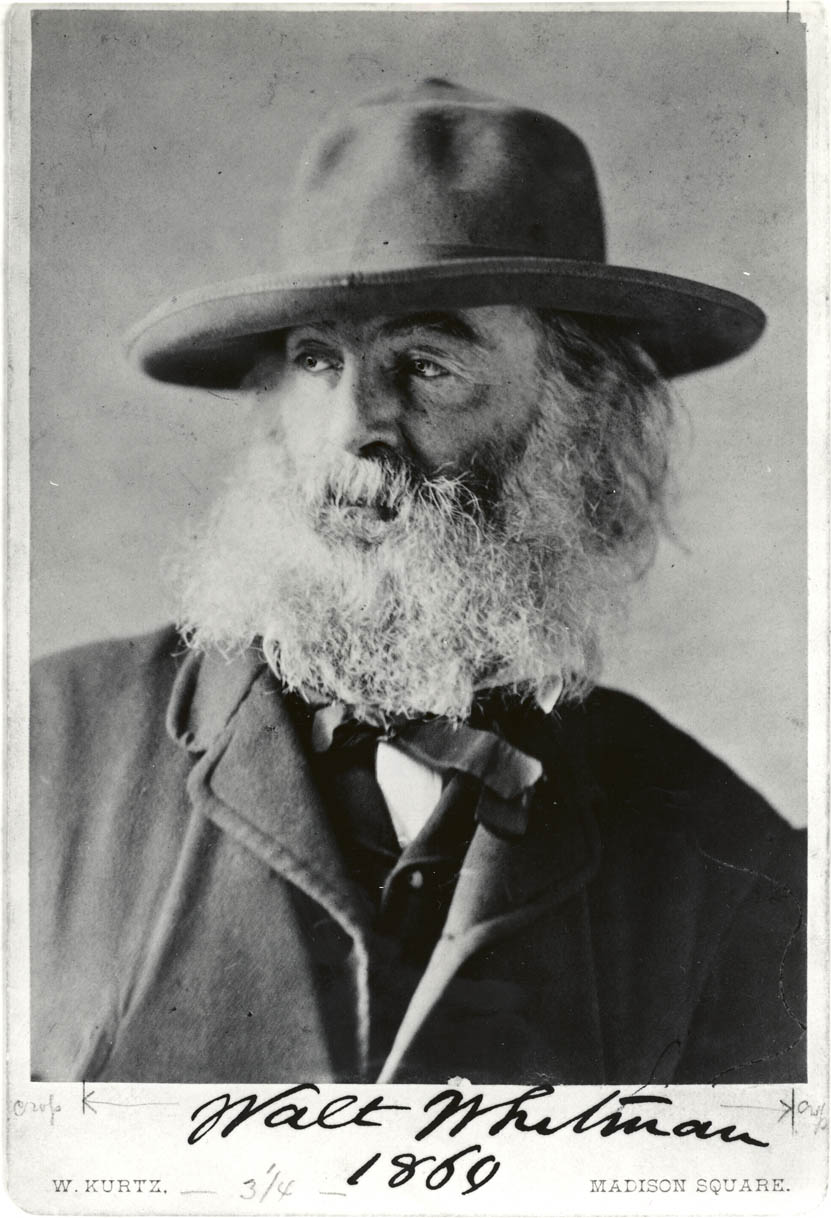Foreword
Whitman’s attention in this section is now focused firmly on a black man, not necessarily a slave (as was the case in Section 10), but rather a driver of a dray (a flat hauling cart, here carrying stones). It is tough, heavy work, and this massive man is fully in charge of it, with his “commanding” glance and his “polish’d and perfect limbs.” The sun bathes and highlights his body just as the water bathed the bodies of the twenty-eight young men in Section 11. Whitman pauses to peer at this man closely, admire his confident presence, and express “love” for him. That casual and easy expression of love across races came as something of a shock to many readers in the mid-nineteenth century. And the way this “negro” is dressed, surprisingly, is a mirror image of the frontispiece portrait of Whitman that opened the 1855 Leaves of Grass (the same portrait reproduced on this website accompanying Section 1), with his shirt open at the neck, his “calm and commanding” glance, and the hat “slouched” to one side of his forehead. This self-identification of the poet with the black dray-driver is another step toward a democratic way of thinking, as the poet becomes a caresser of all life (“not a person or object missing”), absorbing everyone and everything into his non-discriminating and always-expanding self.
To demonstrate his radical openness to the world, the poet’s gaze drifts from the driver to the horses that he commands, and then to the oxen that pull their own heavy load. But he does not just observe them, he looks the cattle in the eye and finds in those eyes something inexpressibly rich and complex, “more than all the print I have read in my life.” He watches birds rise into the air at the sound of his footsteps, admires the patterns of their circlings in the air (“those wing’d purposes”) and then engages in one of his many slides up and down the evolutionary chart, undoing what most people think of as hierarchy (humans somehow superior to animals) into an equalizing identity: he knows the bird is contained within himself, and he is at some level at one with the bird and the tortoise, all of them creatures with their own purposes, their own equally meaningful journeys in this world. We humans may be proud of our words and our intellect, but if we open our eyes and ears to the world around us, we quickly realize we are not the only creatures that sing the songs of ourselves: the jay never learned the scales but nonetheless “trills” a pretty good song. Look into the eyes of any animal, Whitman advises, to get the “silliness” of believing in your own special status shamed out of you.
- Foreword to Section 13
- Song of Myself, Section 13 —read by Eric Forsythe
- Afterword to Section 13
Afterword
From the collective we to the individual I, from a community of likeminded souls to a solitary self joined at the molecular level to everything in the universe—this is the journey that Whitman undertakes in the thirteenth section, the quarter point of “Song of Myself.” He joins the team of a black man driving “the dray of the stone-yard” into the wild, where he will absorb into himself every niche in the environment, oxen and birds and leafy shade, mindful of the limitations of human intelligence. Here the lord and giver of life affirmed in the Nicene Creed makes way for “the caresser of life,” and in his proclamation of the unity of being Whitman deliberately echoes the language reserved by the Church Fathers for the Holy Spirit (“We believe in one holy and apostolic church. We acknowledge one baptism for the forgiveness of sins.”), and in so doing he expands the range of our affections. Signs of his faith are carried not by the dove, the symbol of the Holy Spirit, but by drakes and ducks and jays, which tune his song, his credo: “I believe in those wing’d purposes,/ And acknowledge red, yellow, white playing within me.” The colors of the rainbow, every race on earth, feathers and flowers, the tortoise and the bay mare—all inflame the imagination of the poet, who professes his belief in something larger than the Trinitarian godhead worked out by the bishops at the Council of Nicaea. Silly to imagine that we know more than an animal. Sillier yet to think that we are not on the same team.
Question
The American cereal magnate and vegetarian Will Kellogg once asked how anyone could eat anything that has eyes. His question is provocative because there is something mystical about eyes (“the windows to the soul,” as they’ve been called for hundreds of years). What experiences of interspecies eye-gazing have you had, and what can you detect in the eyes of animals that is different from what you see in the eyes of other humans?

